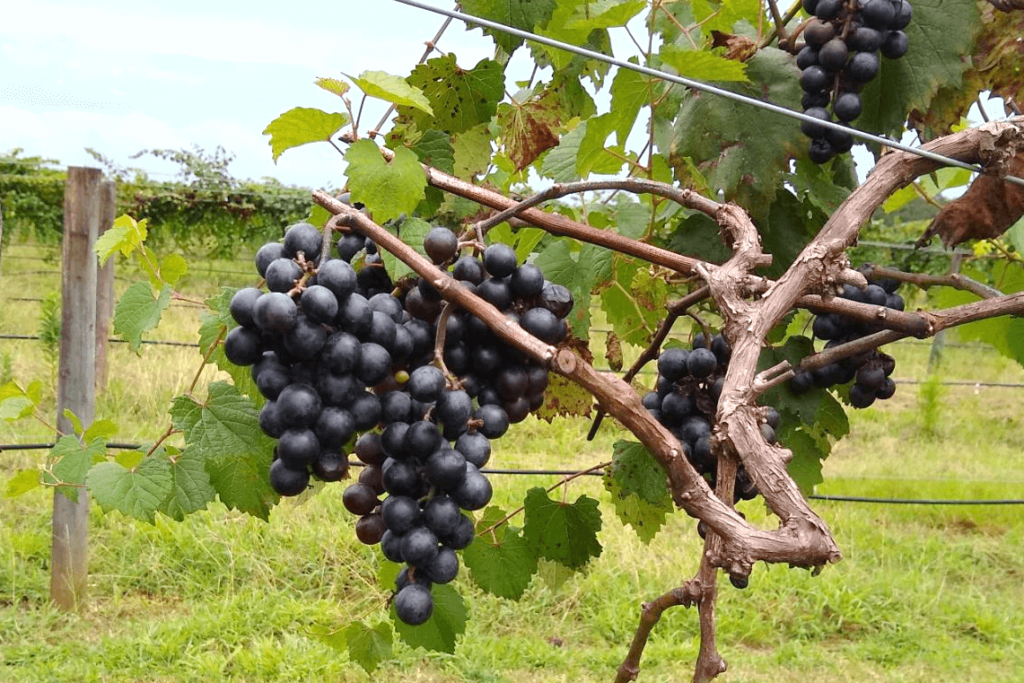Haley Williams and Dr. Eric Stafne, Mississippi State University
Decades of development followed the grape research that was initiated by the United States Department of Agriculture in Meridian, Mississippi in 1937. Eventually this research led to the release of a new grape cultivar from Mississippi State University in 1981. That new cultivar was ‘MidSouth’: a self-fertile hybrid bunch grape with some European and many American species in its lineage. ‘MidSouth’ is still grown in Mississippi and some surrounding states for its adaptability to difficult environmental conditions, relatively good disease tolerance, and excellent jelly.

Berries of ‘MidSouth’ have an intriguing slightly foxy, raspberry flavor. They contain seeds, a dark blue-purple slip-skin, and are capable of producing dark ruby colored juice. The juice typically has relatively low total soluble solids (TSS) (<20 °Brix) and high titratable acid (TA) (>10 g/L) content, though, and has not been recommended for wine use in the past. However, canopy manipulation practices have shown to improve these juice qualities in some other cultivars. There are currently studies on early pruning, leaf removal, and shoot thinning being done to determine if these practices would be worthwhile for ‘MidSouth’. Conclusions regarding these studies will be made later this season.
While ‘MidSouth’ use as a varietal red wine grape is still being evaluated, it does show promise for use in red blends with other cultivars of a higher TSS: TA ratio which would balance out the low ratio of ‘MidSouth’. It may also be well-suited for sparkling or rosé style wines, which require TSS and TA content that more closely resembles that of ‘MidSouth’. No matter the style, there is much potential for ‘MidSouth’ as a relatively low maintenance wine grape for the South.